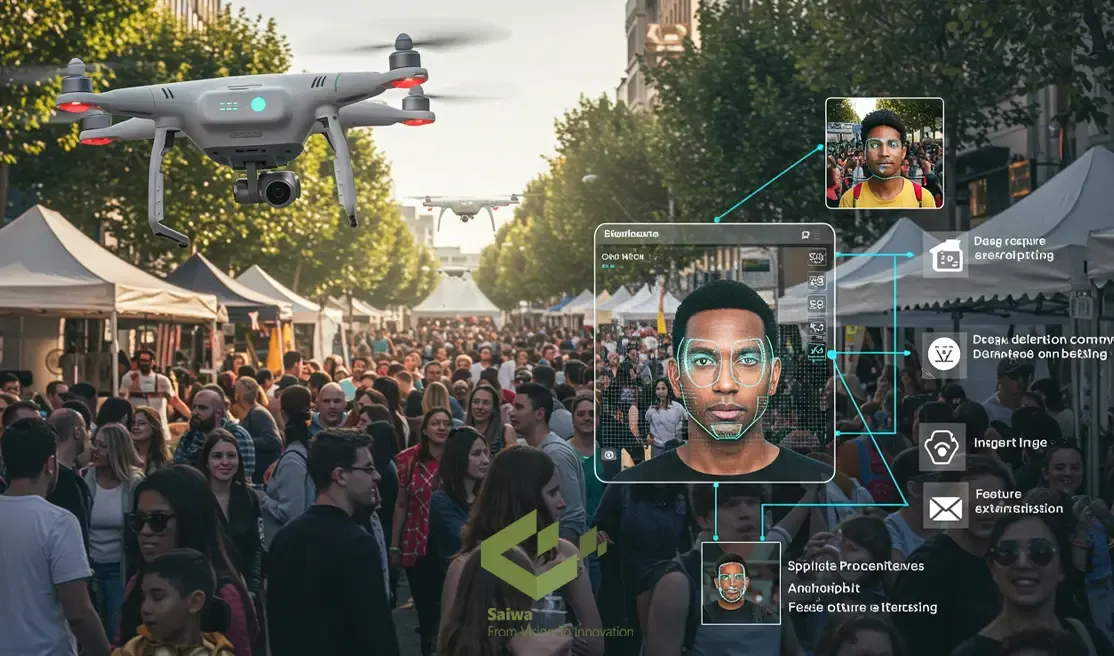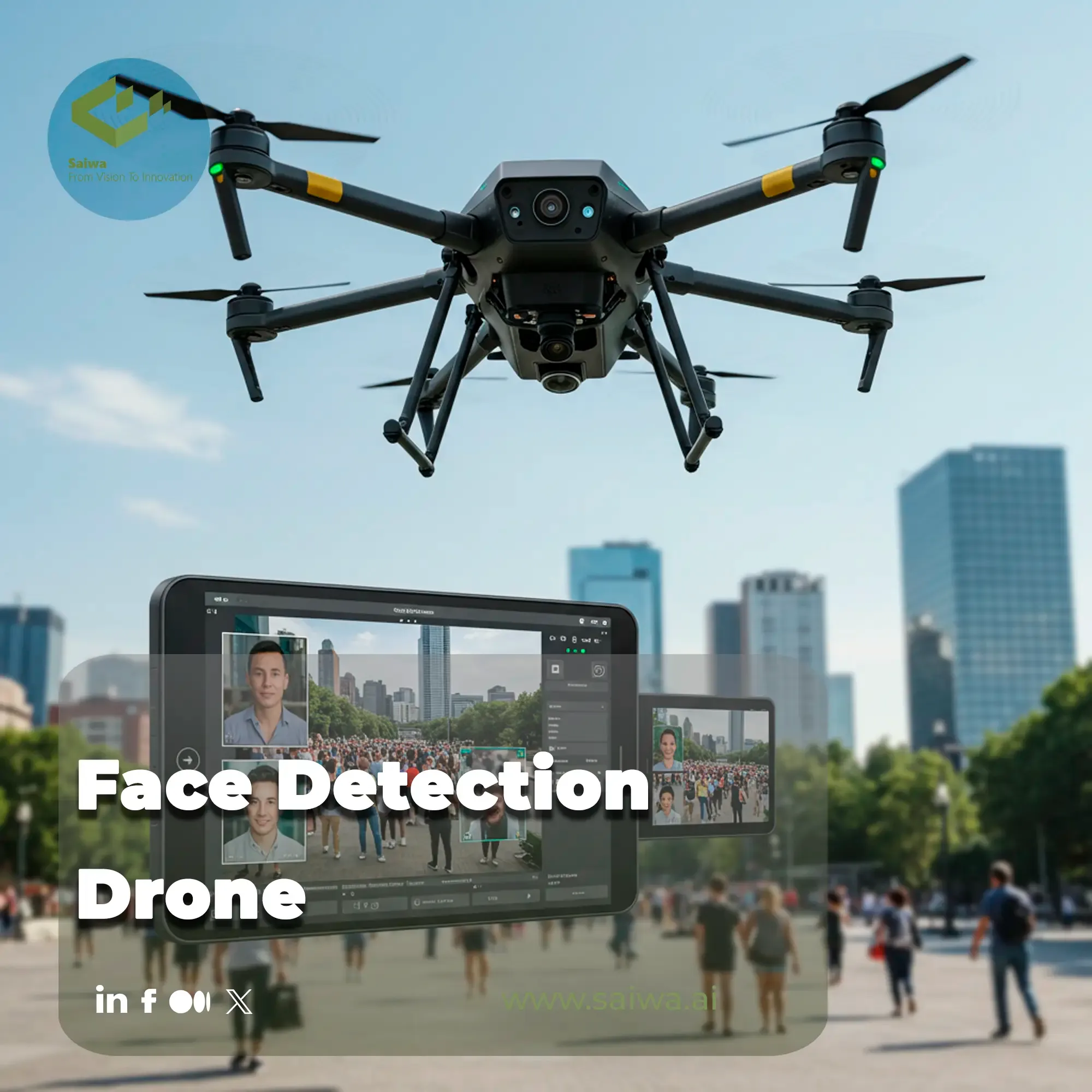The convergence of autonomous aerial systems and artificial intelligence is fundamentally reshaping high-altitude visual analysis. At the forefront of this evolution are systems designed for intelligent observation, where the ability to interpret visual data in real time is paramount.
Saiwa’s Fraime platform provides the sophisticated computer vision services, such as advanced Face detection, that power these next-generation solutions. This article offers a comprehensive technical overview, dissecting the operational mechanics of these advanced systems, their diverse real-world applications, the inherent technological hurdles, and the trajectory of future developments in this transformative field.
How Face Detection Works on Drones
The operational sequence begins when a drone's high-resolution camera captures video. This data is processed either onboard or relayed to a cloud platform. Here, sophisticated algorithms like Convolutional Neural Networks (CNNs) analyze the feed frame-by-frame.
These models are trained to identify human facial patterns within complex environments, effectively locating faces and distinguishing them from other objects. The system then typically applies a bounding box annotation for precise localization, enabling further actions like tracking or recognition without manual intervention.

Applications of Face Detection Drone Systems
The practical utility of this technology spans multiple critical domains. Its ability to identify and monitor individuals from an aerial perspective provides unique advantages, solving challenges that are difficult to address with ground-based systems alone. Key applications include:
Security & Surveillance
For monitoring critical infrastructure, these drones significantly enhance perimeter security. They can autonomously patrol vast areas and identify unauthorized individuals, streamlining surveillance efforts and enabling a more rapid response to potential threats. This automated oversight is a crucial tool for real-time Anomaly detection.
Event Crowd Analytics
During large public gatherings, from concerts to marathons, drones offer invaluable situational awareness. They assist security and event organizers in managing crowd dynamics, identifying potential safety issues, and locating missing persons quickly and efficiently, all without the need for intrusive ground-level intervention.
Border or Facility Monitoring
Covering vast and often difficult-to-access terrains, drone-based systems provide a highly effective and cost-efficient solution for monitoring international borders and the perimeters of large industrial facilities. They excel at identifying human presence in restricted, remote, or hazardous areas.
Emergency Response Support
In post-disaster scenarios, such as after an earthquake or hurricane, drones are instrumental in accelerating search and rescue operations. By systematically scanning affected zones from above, they empower first responders to locate survivors far more quickly than traditional ground-based search methods would allow.
Tech Challenges in Drone Face Detection
Despite their immense potential, deploying effective Face Detection Drone Systems is not without significant technical obstacles. These systems must overcome challenges related to the unique nature of aerial data acquisition. The most prominent issues include:
Varying altitude & angles
Faces captured from above often appear at oblique angles and dramatically different scales, which complicates recognition. Algorithms must be exceptionally robust to handle these severe perspective distortions and maintain accuracy across a wide range of distances.
Motion blur and lighting conditions
The rapid movement of the drone, combined with constantly changing outdoor lighting, frequently results in blurry or poorly illuminated images. These imperfections can severely degrade the accuracy of detection algorithms, leading to false negatives or positives.
Processing limitations on UAV hardware
Running complex AI models demands substantial computational power. Many drones lack the necessary onboard processing capabilities for performing this analysis in real time, which can create a critical latency bottleneck. This is precisely the challenge that platforms like Saiwa’s Fraime address by offloading intensive computational tasks to a powerful cloud infrastructure, ensuring rapid and accurate results from anywhere.
Conclusion: Future of Drone-Based Face Detection
The future of this field lies in achieving greater autonomy and on-device intelligence. Expect significant advancements in onboard edge computing to minimize latency, alongside smarter algorithms that enhance accuracy in adverse conditions. The integration of drones into collaborative, autonomous swarms will further expand their capabilities, making them an even more formidable tool for remote sensing, security, and large-scale data analysis.
Note: Some visuals on this blog post were generated using AI tools.

